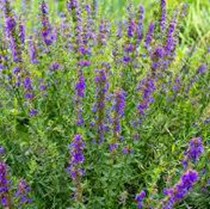Area
Medicinal hyssop is grown in the Crimea, the Caucasus, Moldova, Southern Europe, the countries around the Mediterranean, as well as in Central Asia.
Botanical description of the plant
Medicinal hyssop belongs to the family of lamiace. Sharp-smelling, perennial, evergreen shrub, 85-90 cm tall. The root is arrow root. The main part of the stem is woody, branched 4-sided. The leaves are opposite, lanceolate or linear with no band or short band, the edges slightly bent downwards. Its flowers are ink-colored, pink in color, the leaves are grouped in 3-7 clusters. The stalks are spike-shaped, forming umbrellas 20-22 cm long. The fruit consists of 4 indeterminate, ovoid nuts. Length 2.5-3 mm, the surface of the nuts is uneven, the color is dark brown or brownish black

Medicinal properties
The essential oil of medicinal hyssop is used in pharmaceuticals mainly to improve the odor of lubricants, partly other drugs used on the surface. Essential oil is used as a means of repairing burns due to its antiseptic properties. In medicine it is used in the treatment of diseases of the chest organs, shortness of breath, bronchitis and bronchial asthma. Issop oil is widely used in the food industry.
Growing technology
Medicinal hyssop is propagated mainly by seeds and vegetatively. For its good growth and development it is necessary to choose fertile soils and areas with good sunlight. Since Issop is a perennial plant, you should not plan to place it in alternate planting fields, as it can bear fruit in one place for 20-25 years. In autumn, 15-20 tons of decomposed manure and 30-40 kg of superphosphate per hectare, in areas with low rainfall and in soils with deep groundwater, 20 kg of nitrogen fertilizer are applied to the soil at a depth of 25-28 cm. Propagation from issop seeds is the best method. Its most moderate planting time is late October and the first decade of November. Seeds are sown deeper. If sowing is postponed to spring, the seeds must be stratified. To do this, put them in moist sandboxes and store in unheated rooms. The seeds are periodically moistened to prevent them from drying out and becoming moldy. Before planting, the soil is cleared of weed debris, plowed and leveled with a rake. When the air temperature is 15-17 degrees, the spacing is 70 cm. Up to 4 kg of seeds are used per hectare of land. If the soil does not have enough moisture, it is watered immediately after planting. The seeds germinate in 6-8 days. After 10-12 days, 2-3 true leaves are formed on the grass, and the plant spacing is softened by weeding and weeding. As a result of precipitation in the spring, when the hyssop is planted in the fields, the plant spacing is softened, and at the same time, 2-3 plants 20-30 cm long are left in each bush. Planted plants bloom in late June. Plants planted in the fall will bloom in late May and early June. Before the mowing phase, the plant is watered twice, and after watering the plant spaces are loosened to a depth of 8-10 cm with cultivation. Plants planted in the spring begin to bloom in early July. By this time the root system of the hyssop is well developed and the plant is beginning to grow vigorously. It is recommended to start issop feeding in the milking phase. Before irrigation, 50 kg of nitrogen and 30 kg of potassium fertilizers are applied per hectare. Feeding the plants with diluted manure gives good results. Issop planted areas should be weeded every 2-3 irrigations.The second feeding should be completed by giving 40-50 kg of nitrogen and 20 kg of phosphorus fertilizer per hectare during the flowering phase of the plant. Its inflorescence has 16-20 flowers. Its flowers open at 6-7 p.m. At this time, bees and butterflies appear in the areas where hyssop is planted. During the growing season, the medicinal hyssop is watered 6-8 times, taking into account the air temperature. The raw material of the plant is a corn inflorescence. In their mass flowering phase, when the length of the flower buds is 30 cm (in the second half of August), its raw material is collected. When the raw material is freshly harvested, it contains a lot of moisture. Therefore, the plant is thinly stacked on well-ventilated sheds to prevent mold. The crop is harvested in dry weather without wind.





